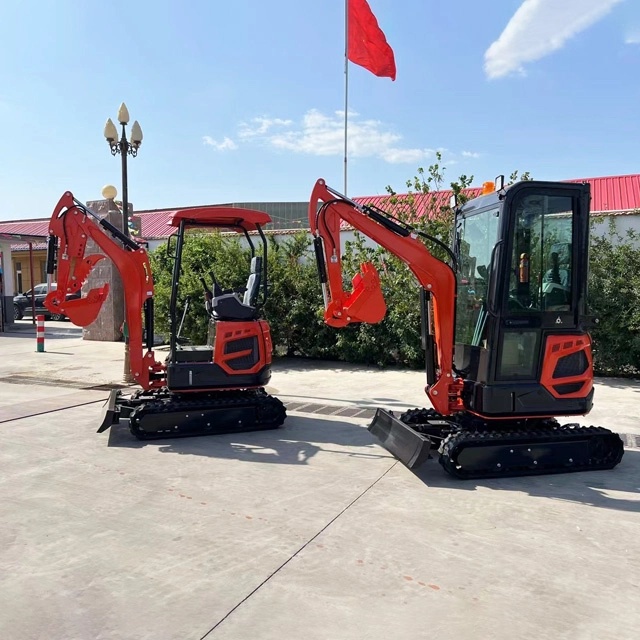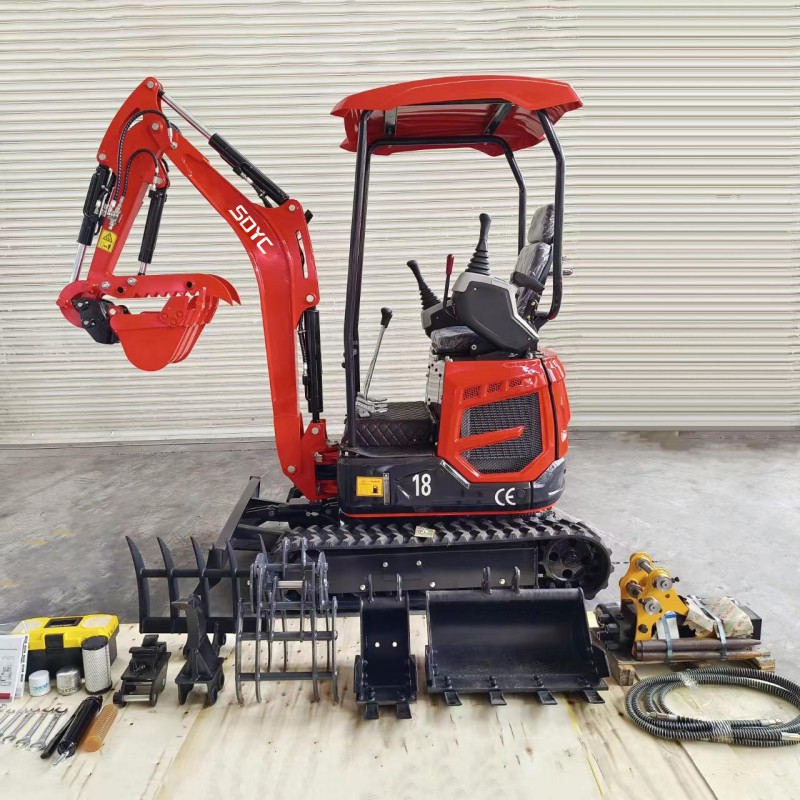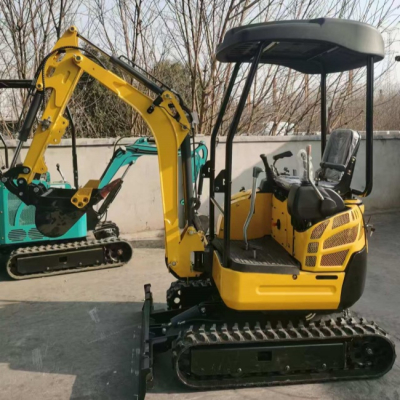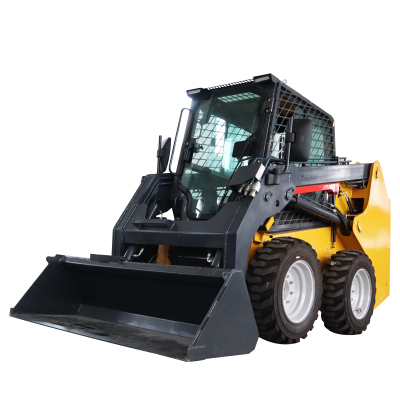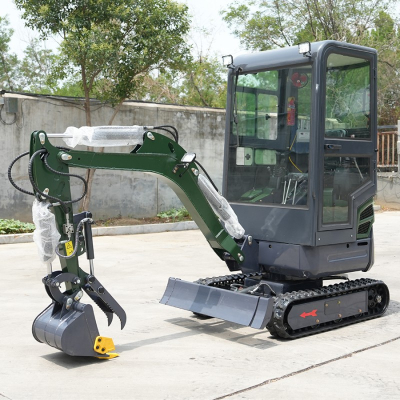On-site diagnosis of hydraulic system faults in small and medium-sized excavators
Currently, small and medium-sized excavators with a bucket capacity of 0.6~1.6m3 account for over 80% of the total excavator fleet. If their hydraulic systems malfunction, accurately and quickly diagnosing the location and cause of the fault on site and promptly eliminating it will be of great significance in accelerating project progress and reducing economic losses.
Basic requirements for on-site fault diagnosis
On-site diagnosis requires maintenance personnel to possess a certain degree of knowledge and practical experience in hydraulic transmission. Before conducting fault diagnosis on a new model, it is necessary to carefully read the accompanying operation and maintenance manual to gain a basic understanding of the hydraulic system of the machine. Currently, the hydraulic systems of small and medium-sized excavators are almost composed of two parts: the main oil circuit and the pilot control oil circuit; the main oil circuit adopts a dual-pump dual-loop variable open system, while the pilot control oil circuit is a fixed quantity system. By reading technical materials, one can grasp the main parameters of the system, such as the opening pressure of the main safety valve, pilot control pressure, and flow rate; familiarize oneself with the system's schematic diagram, grasp the functions and interrelationships of each component symbol in the system, analyze the functions of each branch circuit; also, one should have some understanding of the structure and working principle of each hydraulic component; analyze the possible causes of a certain fault; and understand the location of each hydraulic component relative to the machine, as well as their connection methods. When diagnosing faults specifically, one should follow the order of "from the outside to the inside, and from the easy to the difficult", and investigate the possible causes of a certain fault one by one.
Methods for on-site fault diagnosis
The main method for on-site diagnosis of hydraulic system faults is still empirical diagnosis. The experience diagnosis method is a method in which maintenance personnel use their theoretical knowledge and accumulated experience, combined with the actual situation of the machine, to quickly diagnose the location and cause of the fault using the "ask, look, listen, touch, and test" methods. Specifically:
1. Ask
'Ask' is to inquire about the basic situation of the faulty machine from the operator. Mainly understand the abnormal phenomena of the machine; Is the malfunction sudden or gradual; Whether there are any violations of operation and maintenance during use; Whether the hydraulic oil grade is correct and the situation of replacement; The timing of the malfunction, whether it occurs at the beginning of work or after a period of operation, and so on. After obtaining this information, the characteristics of the hydraulic system malfunction can be basically determined. Generally speaking, sudden failures are mostly caused by dirty hydraulic oil or broken springs, resulting in poor valve sealing; Gradual failures are mostly caused by severe component wear or aging of rubber seals and fittings.
If the excavator starts working normally, but after working for a period of time, it slows down and is accompanied by noise and an increase in oil temperature (the oil temperature gauge reading is greater than 75 ° C), it may be caused by internal leakage of the pump or valve, excluding reasons such as insufficient oil volume, short-term high load operation in high-temperature environment, excessive dirt on the cooling fins of the oil cooler, and slipping of the fan tape. For example, an excavator initially had normal pilot control pressure, but soon its value did not decrease. The inspection result shows that the rubber inlet pipe of the pilot pump was deformed due to heating, resulting in obstruction of the oil inlet.
2. Look at it
'Seeing' refers to observing the working condition of the hydraulic system through the eyes. Whether the fuel level in the tank meets the requirements, whether there are bubbles and discoloration phenomena (machine noise, vibration, and crawling are often related to a large number of bubbles in the oil); Oil leakage at sealed areas and pipe streets; The changes in the indicated values of pressure gauges and oil temperature gauges during operation; Is there any damage, gradual detachment of connections, or loosening of fasteners in the faulty area. When hydraulic oil leakage occurs, after ruling out insufficient or uneven torque of the fixing bolts, before replacing the oil seal that may have been severely worn or damaged, it is also necessary to check whether its pressure exceeds the limit. When installing the oil seal, the model and quality of the oil seal should be inspected, and accurate assembly should be achieved.
3. Listen up
Listening "means using your ears to check for any abnormal sounds in the hydraulic system. The sound of normal machine operation has a certain rhythm and melody, and remains stable. Therefore, be familiar with and master these rules, and maintain stability. Therefore, by familiarizing and mastering these rules, one can accurately diagnose whether the hydraulic system is working properly; At the same time, based on the changes in rhythm and melody, as well as the components that produce abnormal sounds, the faulty components can be identified, and the location and extent of damage can be determined. A high pitched and piercing whistling sound, usually caused by inhaling air; The chattering or creaking sound of a hydraulic pump is often caused by damage to the pump shaft or bearings; The directional valve makes a "wheezing" sound, indicating insufficient opening of the valve stem; The rough and heavy "clacking" sound may be the sound of the overload valve being overloaded. If there is a cavitation sound, it may be due to the oil filter being blocked by dirt, the hydraulic pump suction pipe being loose, or the oil level in the tank being too low.
4. Touch it
Touch "is the use of sensitive finger touch to check whether the pipelines or components of the pressure system have vibration, impact, and abnormal oil temperature rise faults. If you touch the pump casing or hydraulic components with your hand, you can determine whether there is an abnormal temperature rise in the hydraulic system based on the degree of heat and cold, and identify the cause and location of the temperature rise. If the pump casing overheats, it indicates severe leakage or intake of air inside the pump. If abnormal vibration is felt, it may be due to poor installation balance of rotating components, loose fastening screws, or gas in the system. The temperature and tactile sensing are shown in the attached table.
Temperature and hand feel
At around 40 ° C, it feels like touching a high fever patient
At around 50 ° C, it feels hot to the touch, and after touching for a long time, the palms sweat
It feels very hot at around 60 ° C, and most customers can tolerate it for about 10 seconds
Fingers can tolerate around 3 seconds at around 70 ° C
Fingers can only make instantaneous contact at around 80 ° C, and the pain intensifies, which may result in burns
5. Try it out
'Trial' refers to operating the actuating components of the hydraulic system of a machine to determine the location and cause of the malfunction based on their working conditions.
(1) Full interview. According to the design function of the hydraulic system, conduct experiments one by one to determine whether the fault is in a local area or in the entire area. If the entire machine fails or is powerless, the first thing to check is whether the pilot control pressure is normal, whether the clutch (coupling) is slipping (loose), whether the engine power is sufficient, whether the hydraulic oil volume is sufficient, and the sealing condition of the hydraulic pump inlet. If the fault symptom of an excavator is only manifested as automatic lowering of the boom, the cause of the fault may be in the oil circuit of the reversing valve, overload valve, or hydraulic cylinder, and is not related to the hydraulic pump and main safety valve.
(2) Exchange test. When only one circuit or function is lost in the hydraulic system, it can be exchanged with oil circuits with the same (or related) function to further determine the fault location. If an excavator has two independent working circuits, each with its own components, when one circuit fails, the other pump can be connected to this circuit by exchanging high-pressure oil pipes. If the fault is still on one side, it means that the fault is not on the pump and other components of the circuit should be checked; Otherwise, it indicates that the fault is on the pump. For example, in the walking device of an excavator, when there is a fault where one side can walk but the other cannot or automatically deviates, the oil pipes of the two newly purchased motors can be swapped to determine whether the fault is on the motor or inside the reversing valve.
(3) Replace and test. Replace suspected faulty components with components in good technical condition, and confirm whether the components are faulty by comparing the phenomena reflected before and after replacement.
(4) Adjust the trial. Adjust the overflow valve or directional valve of the system and compare the changes in machine operating conditions before and after adjustment to diagnose faults. When adjusting the pressure of the hydraulic system, if the pressure (indicated by the pressure gauge) does not reach the specified value or rises and then falls, it indicates severe internal leakage in the system.
(5) Circuit test. Remove (or loosen the connector) a certain oil pipe of the system, observe the oil situation, and check which section of the oil circuit the fault is located on.
It is recommended that maintenance personnel keep a record of fault diagnosis, collect the phenomena, causes, and troubleshooting methods of the faults, and continuously accumulate and improve them in practical work. On site diagnosis of hydraulic system faults in small and medium-sized excavators

